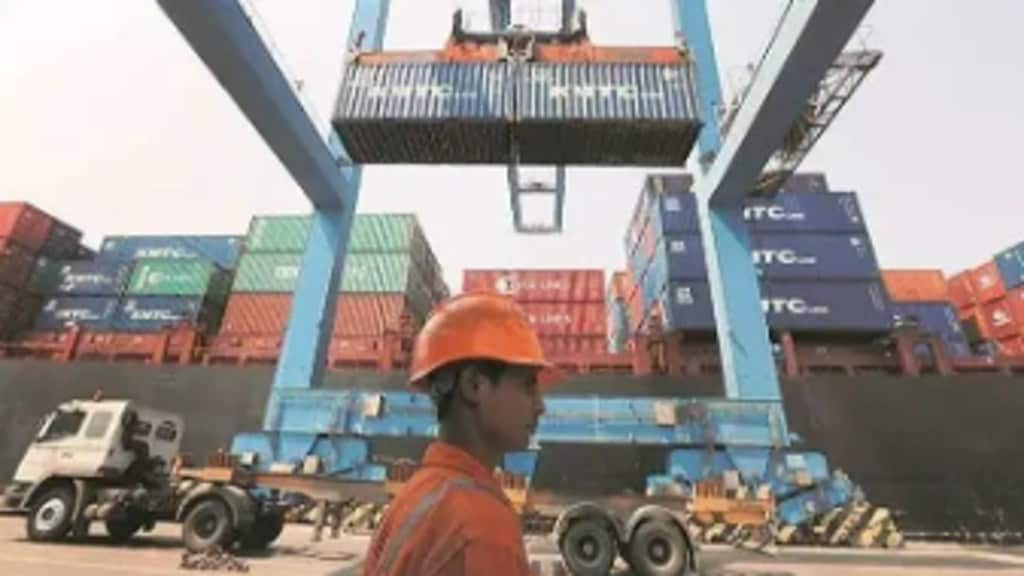The dollar index is threatening to break below its support at 100.80, and when — more likely than if — it does, the next stop (at least, technically speaking) is around 98. With many analysts and the Fed itself talking about another 1% of rate cuts before the year-end (on top of the large 0.5% hike on September 18), and, of course, the madness surrounding Trump and the upcoming election, the break could come fairly soon.
The rupee, which had climbed off the Reserve Bank of India’s (RBI) floor of 84 a week or so ago, has strengthened almost vertically since the rate hike, and it, too, is threatening a break-out. It is just 20-25 paise below a relatively long-term resistance and if/when that breaks, we could see substantially more gains. It is important to note that since January 2022, the rupee has twice strengthened by `2 (to the dollar) in a matter of weeks. In fact, if we go further back (to 2017), rupee strength has been much more substantial (5-10%) and has persisted for much longer (sometimes as long as 6-8 months).
Of course, the RBI, which has had to change its intervention direction suddenly in the past week, will certainly be in there to “smooth the volatility” and may even try to draw a line in the sand at, say 83. On the other hand, buying dollars to prevent rupee appreciation has the unpleasant side-effect of pouring rupees into the market. The increase in liquidity would make it that much more difficult to keep food price inflation controlled. And, given that this is the singularly most difficult issue facing the government, particularly with the state elections around the corner, the RBI may end up stuck between a rock and a hard place if USD weakness overseas predominates.
Over the last two or three years, we have seen several companies reducing or completely stopping the hedging of exports, generally because the sharp fall of the rupee in 2022-23 rendered many of their hedges out of the money. To my mind, simply closing off hedging is never a good strategy because (a) you are carrying unlimited risk, and (b) it becomes very difficult to take a decision on when to restart and determine how to go about it.
We have found that companies that have held on to a pre-defined process, hedging certain amounts on pre-set signals, have generally seen very strong results even after factoring in poor performance in a few quarters.
We have a client who has been using MHP, our structured hedging programme, for many years. Between June 2017 and April 2024, the rupee depreciated from 64.75 to 83.75, a total decline of 29%. Over the same period, the average forward premium was 3.65%, which would have provided a cumulative gain of about 25% on simply selling forward. While on the surface, this argues against hedging, the reality — as experienced by our client — is that following our systematic approach delivered handsome gains of 1.14% as compared to staying unhedged. And while the performance was somewhat volatile, over any of the running three fiscal years covered since 2017 — 2018-20, 2019-21, 2020-22, 2021-23, 2022-24 — the realisations were always higher than staying unhedged, albeit to varying degrees, making up the average.
The client, who had relatively large exports (averaging $165 million per year) was able to pocket gains of nearly `102 crore over the seven-plus years — that’s nearly `15 crore a year! On a unit basis, the gains worked out to `85 lakh for every $10 million of exports. Again, and significantly, the mark to market of the hedges, which translates directly to the accounts, reflected an average quarterly gain of `19.9 crore. There were quarters of losses, to be sure, but it was well contained at only six quarters out of 28.
Given that the rupee is again showing some signs of strength it is, in our view, critical to immediately increase your export hedges. The fact that the premiums have also risen (and are very likely to rise further) is a reason to use a structured programme which could help you balance the conflicting forces — gains from higher premiums versus reduction of spot value as a result of a stronger rupee.
Jamal Mecklai, CEO, Mecklai Financial.
Disclaimer: Views expressed are personal and do not reflect the official position or policy of FinancialExpress.com Reproducing this content without permission is prohibited.


